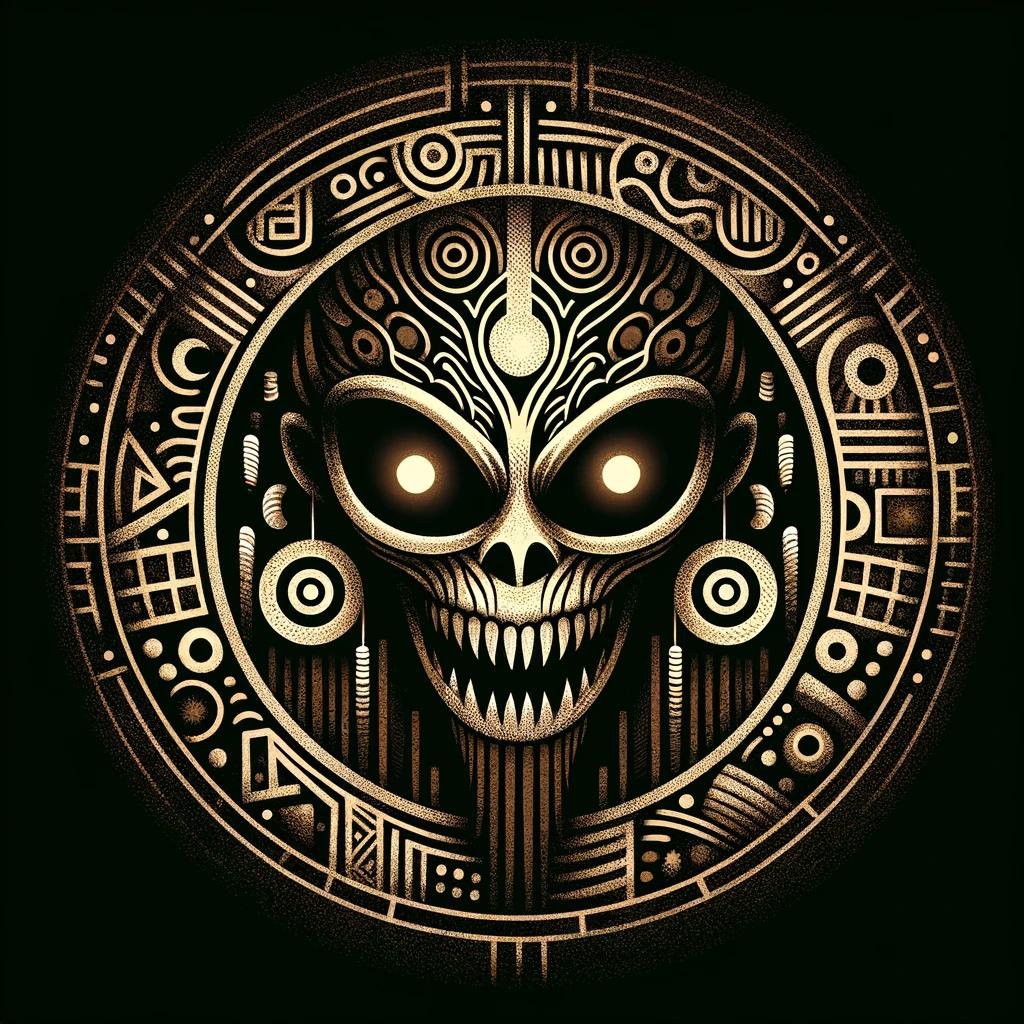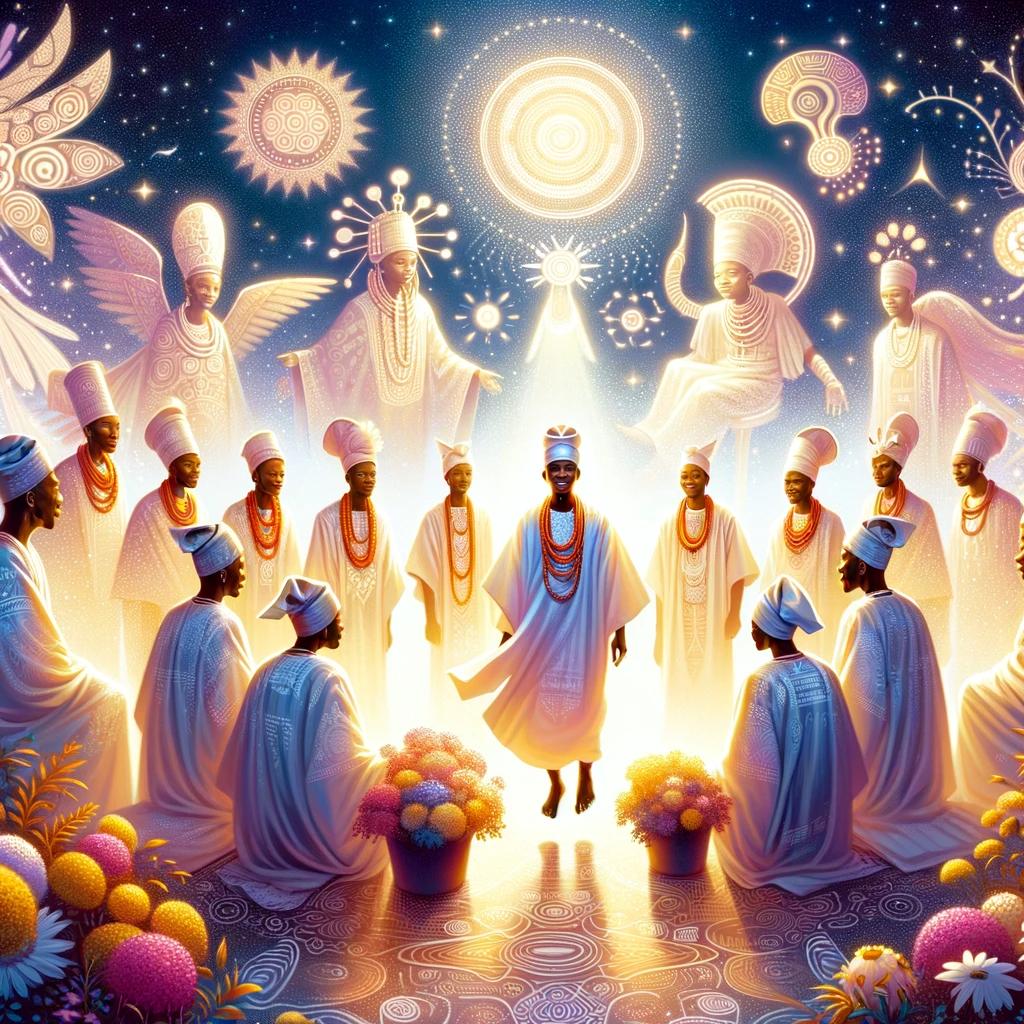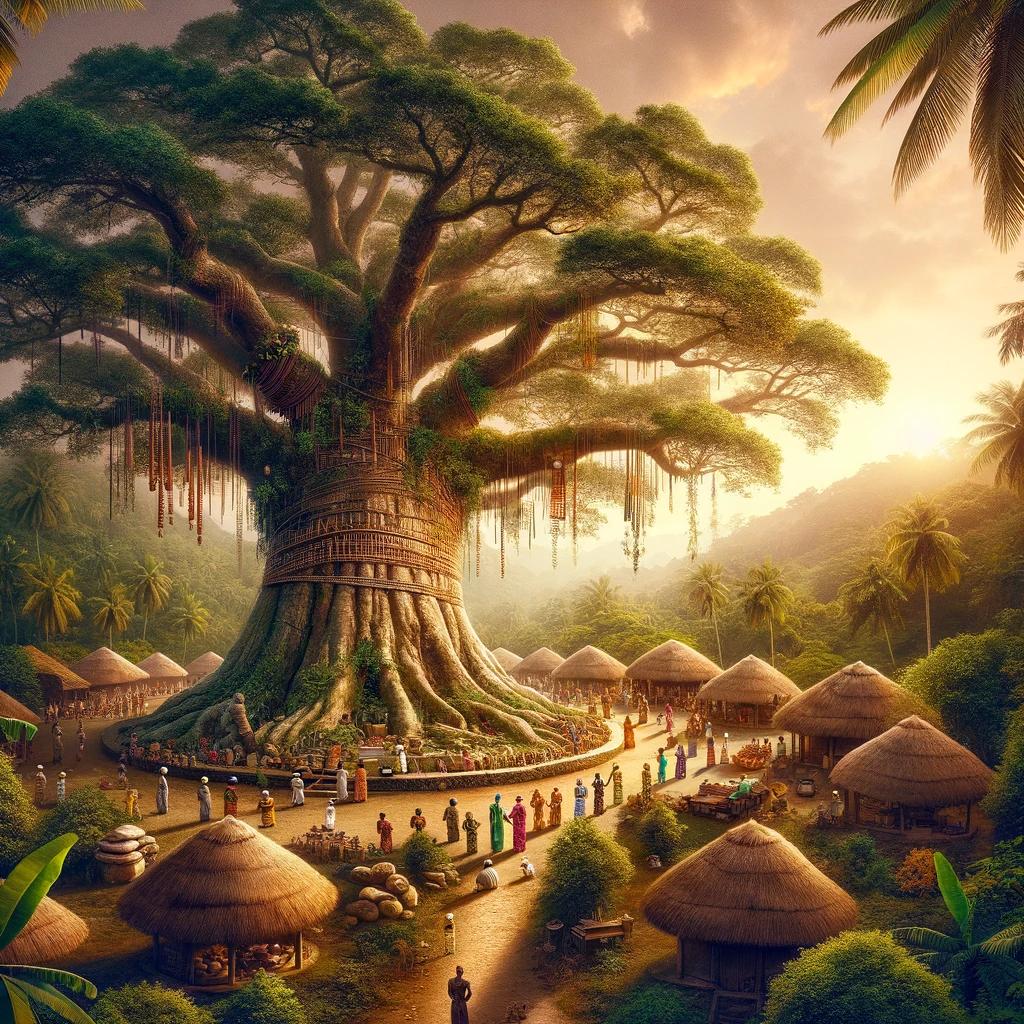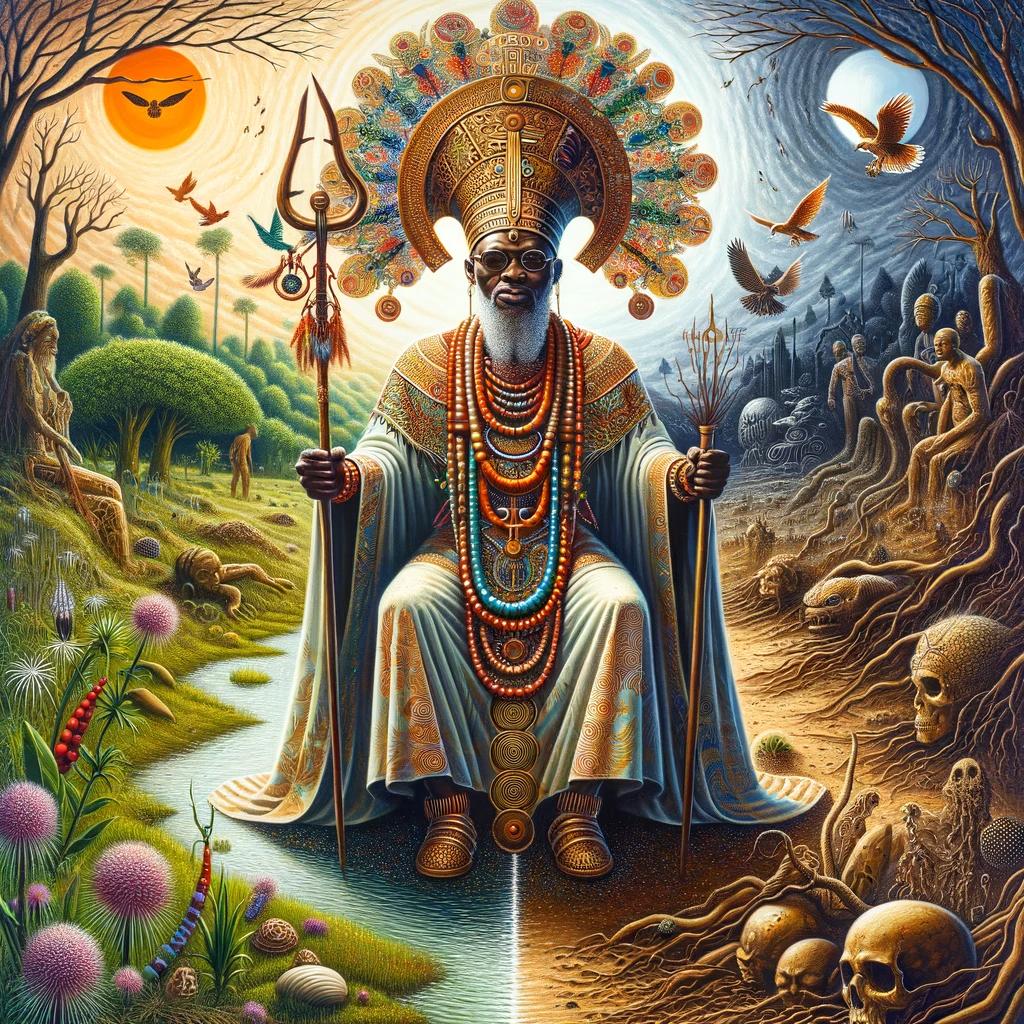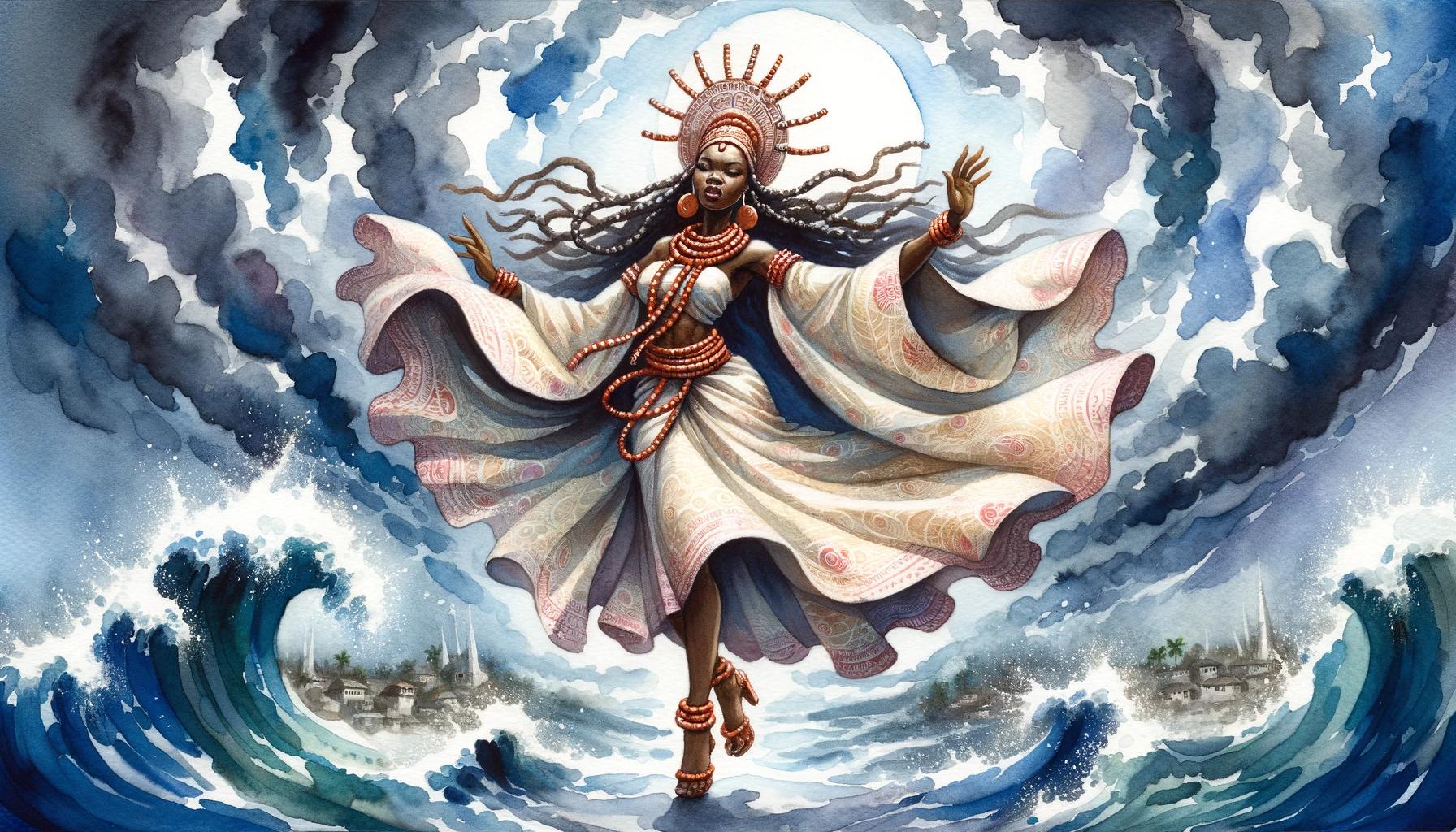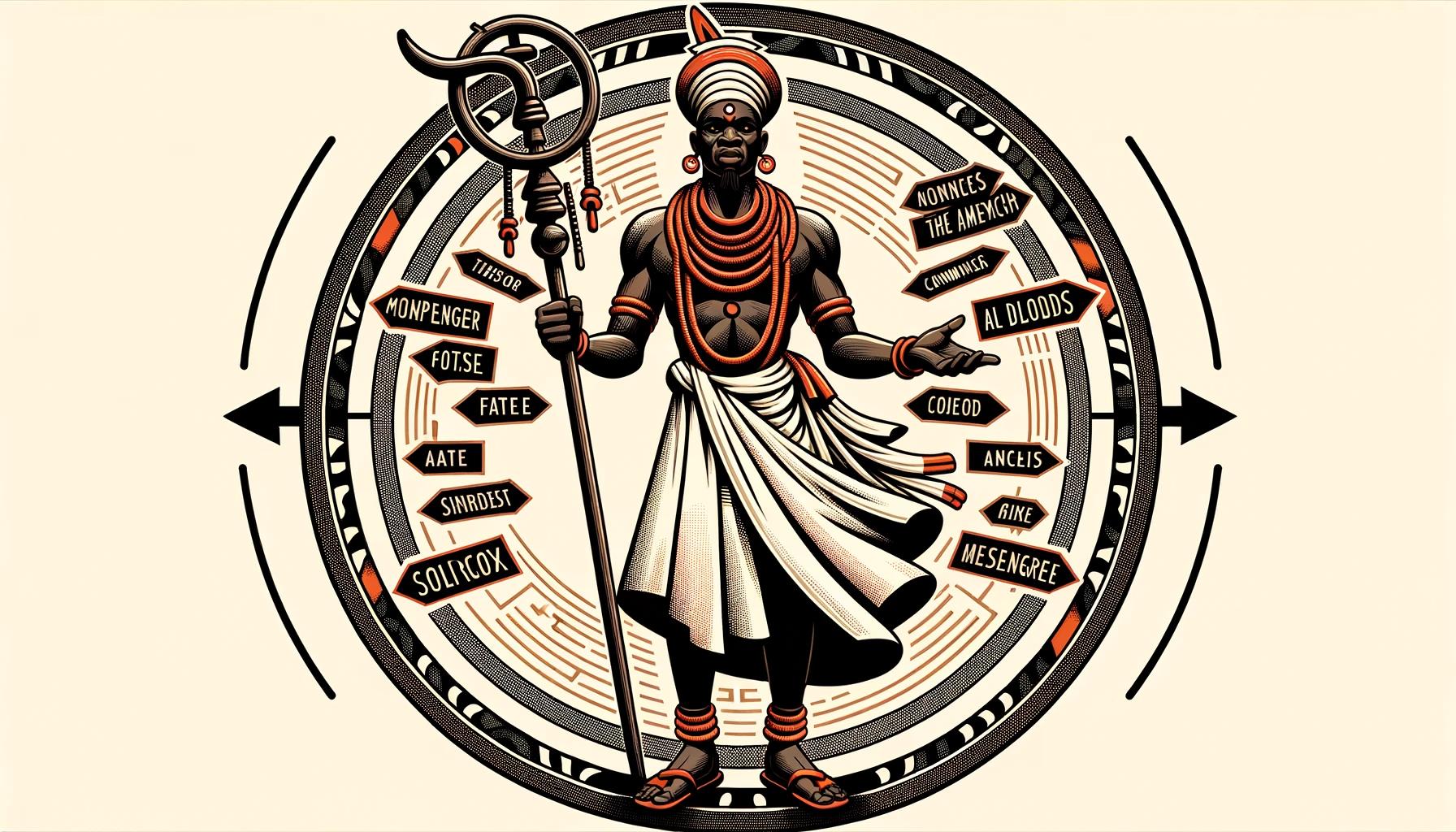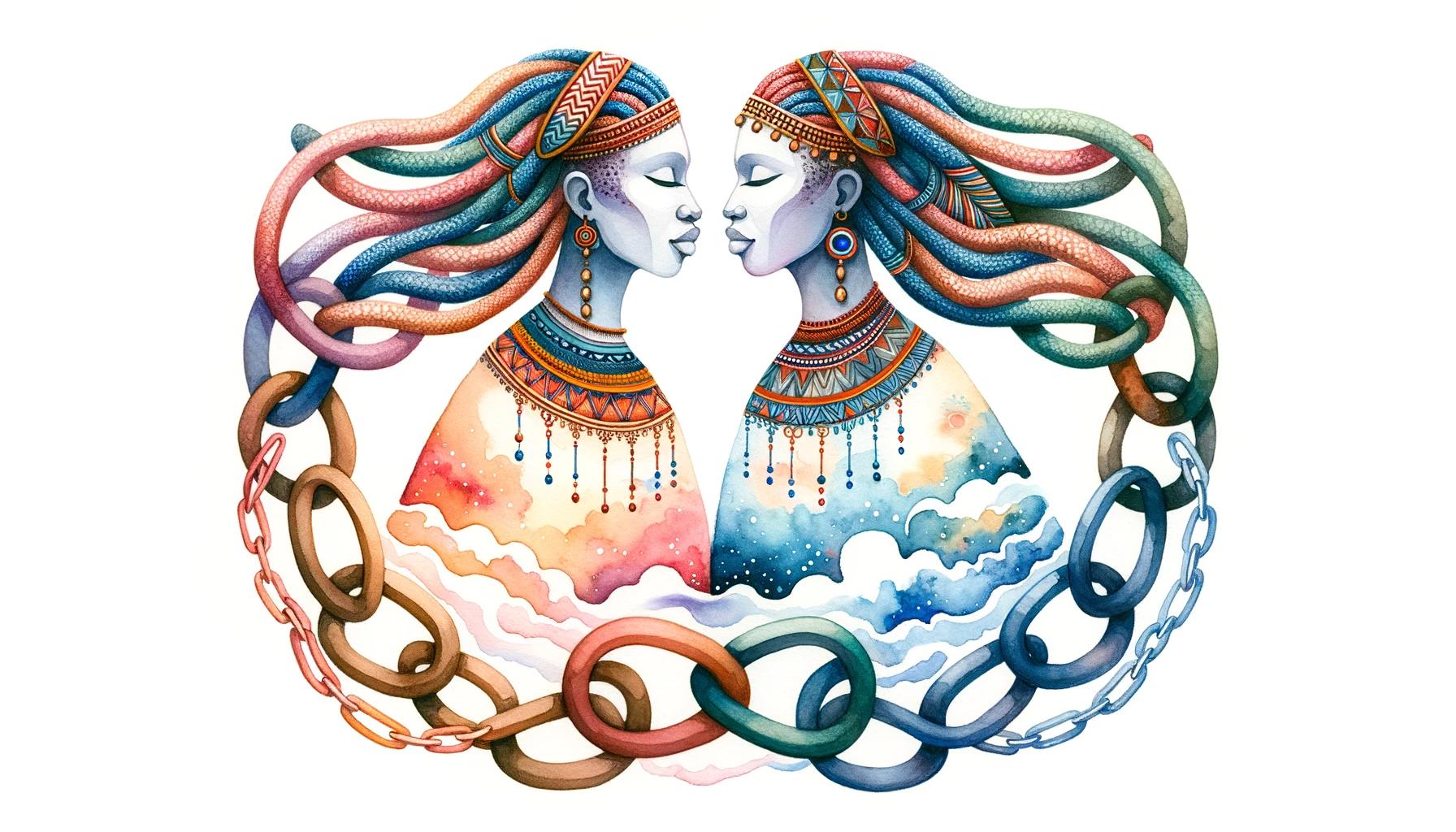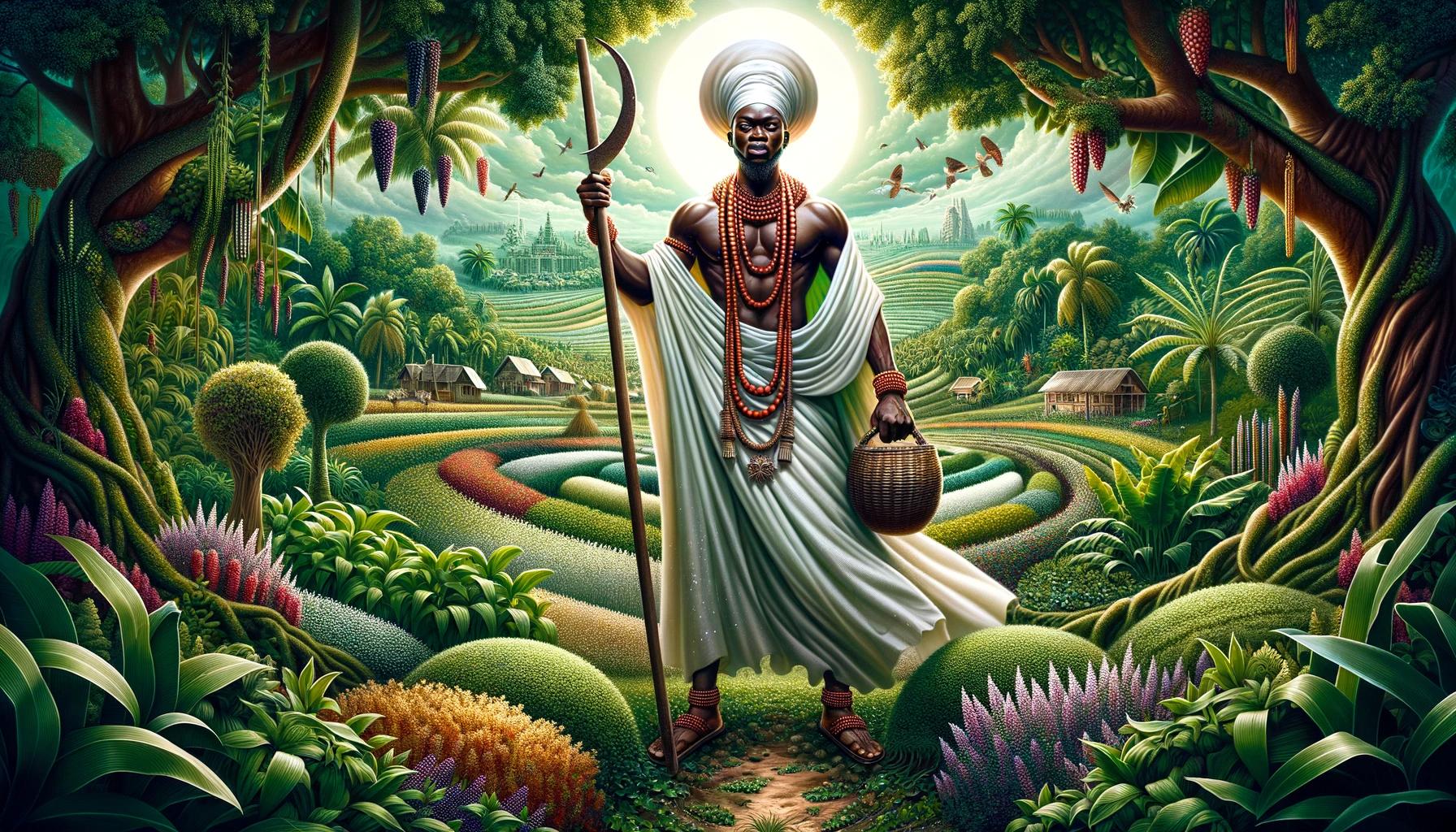Osumare African God: The Enigmatic Divinity of Yoruba Religion
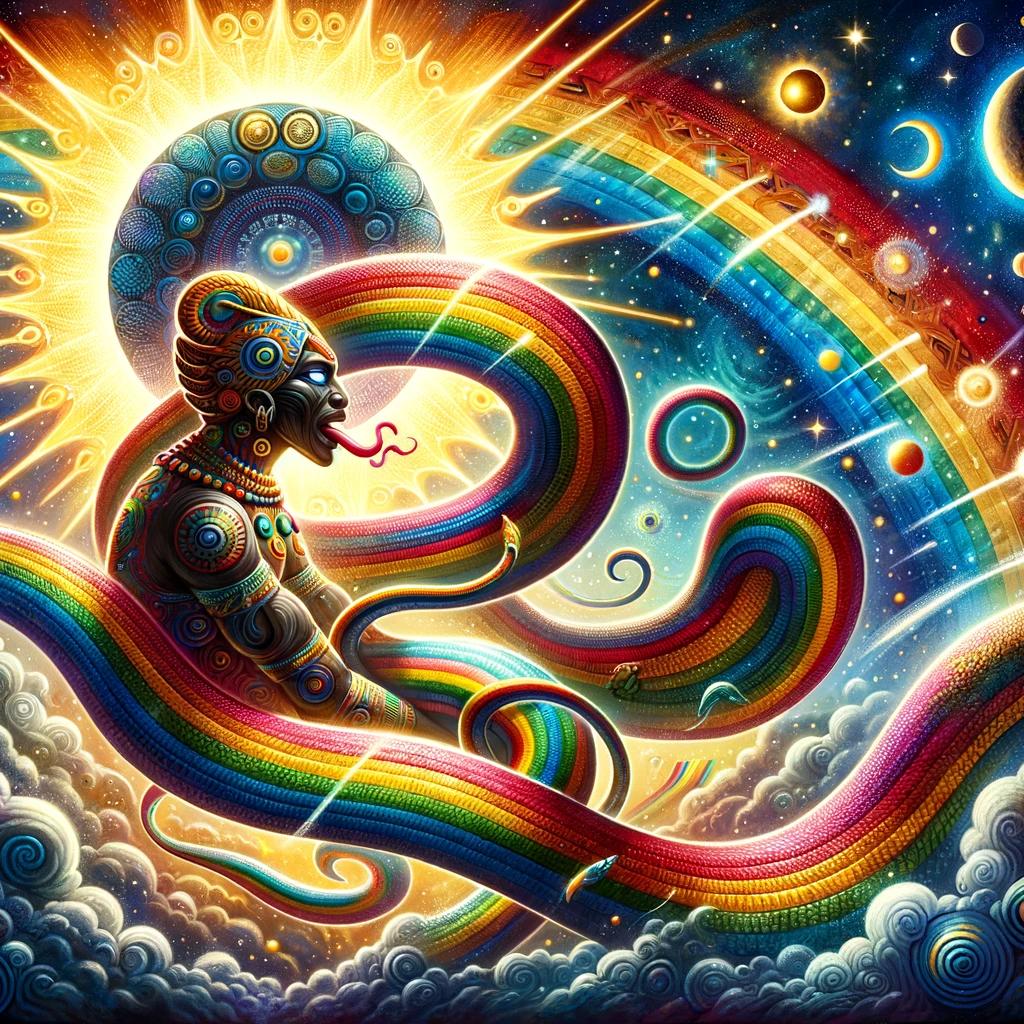
Osumare African god holds significant importance in Yoruba religion. Representing the harmony between heaven and earth, Osumare embodies balance in its gender ambiguity. With connections to rainbows and serpents, Osumare’s symbolism reflects nature’s forces.
This deity also plays a protective role, particularly safeguarding children and overseeing the umbilical cord. Legends and stories surrounding Osumare shed light on its collaborative role in the creation of the world.
Through artistic representations, the diversity of Osumare’s gender variations becomes evident. These characteristics contribute to the uniqueness of Osumare’s influence on contemporary Yoruba practices.
The Significance of Osumare in Yoruba Religion
Osumare holds great significance in Yoruba religion, representing a divine entity that embodies balance and interconnectedness within the spiritual realm.
Believed to be the third god of September and the second Orisha mentioned in Yoruba texts, Osumare is a central figure in the religious practices of the Yoruba people.
As a deity of nature and harmony, Osumare symbolizes the union between heaven and earth, acting as a bridge that connects the celestial realm with humanity. Its association with rainbows and serpents signifies its connection to the natural forces that govern the world.
The interplay between these elements contributes to Osumare’s enigmatic nature and the diverse ways it is perceived within the Yoruba cosmology.
Furthermore, Osumare plays a crucial role as a protector and guardian, particularly in safeguarding the well-being of children. It is believed to have control over the umbilical cord, a vital link between the world of the living and the spiritual realm.
Through its divine influence, Osumare watches over the growth and development of children, ensuring their protection and connection to the spiritual realm.
Overall, Osumare’s significance lies in its representation of balance, nature, and the harmonious relationship between celestial and earthly realms. Its gender ambiguity and diverse depictions contribute to the complexity and richness of Yoruba religious beliefs and practices.
Osumare: A Deity of Nature and Balance
Osumare, a prominent figure in Yoruba religion, represents the essence of nature and equilibrium. This deity embodies the symbolism of rainbows and serpents, harnessing their power and significance within the spiritual realm.
The rainbow, with its vibrant colors stretching across the sky, symbolizes hope, renewal, and the connection between heaven and earth. Serpents, often associated with transformation and wisdom, further accentuate Osumare’s role as a divine intermediary.
The Symbolism of Rainbows and Serpents
The rainbow, as a symbol of divine harmony, signifies the interplay of various energies in the universe. Its appearance after rainfall represents a bridge between the earthly and celestial realms. In Yoruba mythology, Osumare’s association with rainbows reflects its position as a conduit between humans and the gods.
Serpents, on the other hand, hold deep symbolism in many cultures. In the context of Osumare, they represent transformation and rebirth. Recognized as wise creatures shedding their skins, serpents evoke Osumare’s ability to bring about personal growth and spiritual evolution.
Osumare’s Gender and Ambiguity
Osumare’s gender remains a subject of debate and ambiguity. While some perceive Osumare as a male deity, others interpret it as a female entity. Perhaps more intriguingly, many consider Osumare as an androgynous being embodying both masculine and feminine energies.
This fluidity reinforces Osumare’s role as a force that transcends conventional gender boundaries, encapsulating the notion of balance and harmony.
Artistic representations of Osumare often depict masculine features, yet some portray the deity in feminine attire, symbolizing its multifaceted nature.
This gender diversity adds a layer of complexity to Osumare’s identity and highlights the deity’s ability to transcend societal norms and expectations.
Osumare as the Bridge Between Heaven and Earth
Osumare, the African god of Yoruba religion, serves as a profound symbol of connection and harmony between the celestial and earthly realms. This deity embodies the spiritual link that unites heaven and earth, encompassing the natural forces that govern our world.
Within Yoruba mythology, Osumare’s role as a bridge between realms signifies its significance as a conduit for divine communication and energy exchange. As a revered intermediary, Osumare not only carries messages from Olorun, the ruler of the heavens, but also facilitates the balance and interaction between humans and Orishas.
As the divine connection between heaven and earth, Osumare embodies the concept of unity and interdependence. It reminds us of the interconnectedness of all existence, emphasizing the essential relationship between celestial powers and mortal beings.
By embracing this understanding, individuals can seek spiritual alignment and cultivate a harmonious coexistence between the earthly and divine realms.
Osumare’s role as a bridge signifies its profound influence on Yoruba religious practices and the belief systems surrounding the interplay between humanity and the spiritual realm.
The enigmatic nature of Osumare invites contemplation and reflection, urging us to explore the depths of divine connection and our place within the intricate fabric of the universe.
Osumare’s Role as a Protector and Guardian
Osumare, a revered deity in Yoruba religion, assumes the crucial role of a protector and guardian, safeguarding various aspects of human existence.
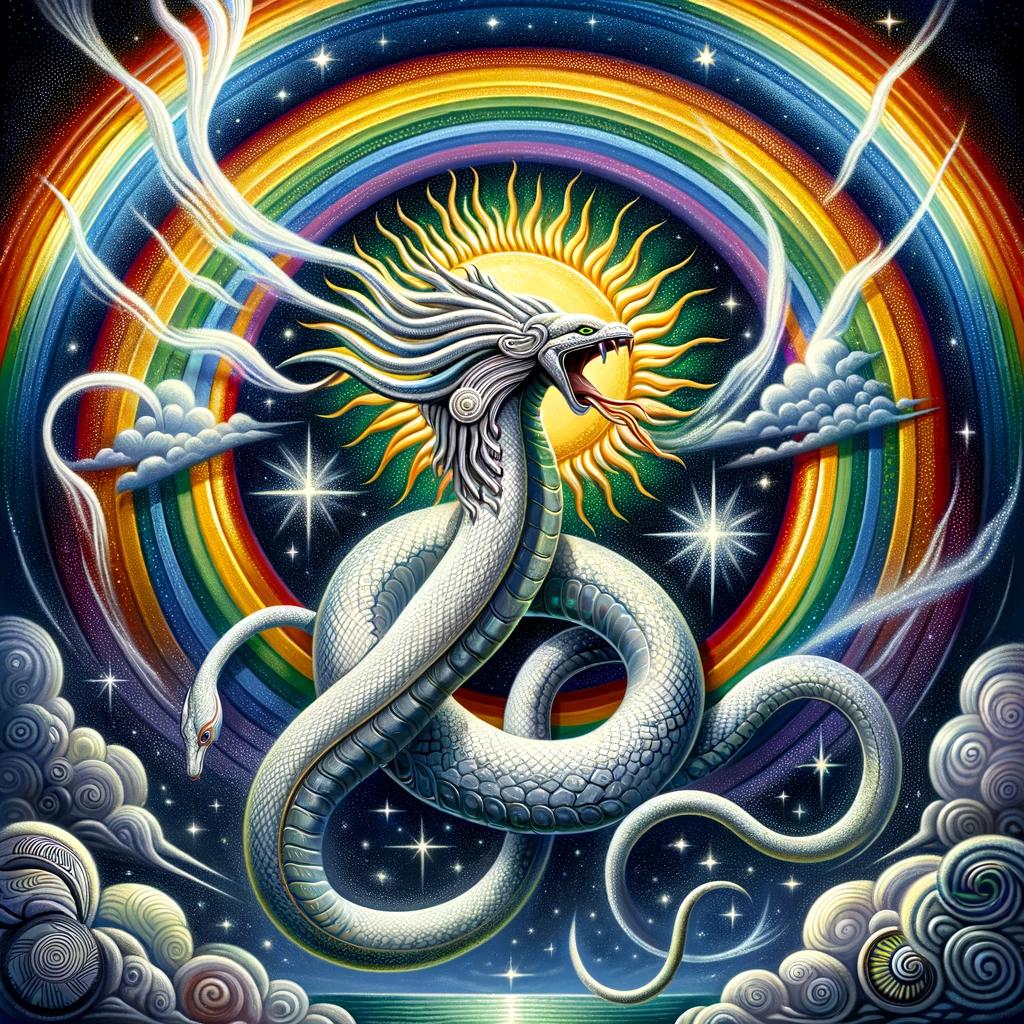
With its special connection to children, Osumare assumes responsibility for the control of the umbilical cord, symbolizing the bond between the living world and the divine.
The Control of the Umbilical Cord
According to Yoruba beliefs, the umbilical cord serves as a vital link connecting a newborn to its maternal source of nourishment.
Osumare, as the overseer of this sacred connection, ensures the proper development and protection of the umbilical cord, safeguarding the well-being of the child. This symbolic duty highlights Osumare’s immense care for the welfare and growth of infants in the Yoruba community.
With its watchful presence, Osumare establishes a sense of security and fosters the growth of newborns, ensuring their smooth transition into the earthly realm. The role of Osumare in controlling the umbilical cord is a testament to the deity’s nurturing and protective nature towards the vulnerable and innocent.
- Ensuring proper formation and function of the umbilical cord
- Guarding against any potential harm or diseases related to the cord
- Assisting in the safe separation of the cord after birth
Osumare’s guardianship over the umbilical cord solidifies its role as a protector and nurturer, essential for the welfare and growth of Yoruba children.
Legends and Stories Surrounding Osumare
Legends and stories surrounding Osumare offer insight into the rich mythology and cultural significance of this African deity. These narratives have been transmitted orally and encompass a wide array of tales that highlight different aspects of Osumare’s character and contributions.
One legend speaks of Osumare’s role in shaping the world. It is said that Osumare, working in collaboration with other divine entities, played a crucial part in the creation of the universe as we know it.
This tale emphasizes Osumare’s connection with Olorun, the ruler of the celestial realm.
Other stories portray Osumare as a bridge between heaven and earth, symbolizing the harmony between the divine and earthly realms.
Osumare’s ability to forge connections between these realms demonstrates its intermediary role, facilitating communication and balance between the spiritual and material worlds.
Furthermore, Osumare’s gender ambiguity is often a subject of fascination in folklore.
Some stories portray Osumare as a male deity, while others depict it as a female entity. In some instances, Osumare is even represented as a combination of both masculine and feminine energies, representing the interplay of duality.
These legends and stories form an integral part of Yoruba culture and provide deeper insight into the multifaceted nature of Osumare. They shed light on its significance not only as a divine being but also as a symbol of interconnectedness, balance, and fluidity in the cosmic order.
Osumare’s Collaborative Role in the Creation of the World
The myths and legends of Yoruba religion shed light on Osumare’s integral part in the creation of the world. As a divine being, Osumare worked alongside other deities to bring about the existence of the universe.
Osumare’s collaboration with Olorun, the ruler of the heavenly realm, played a significant role in this cosmic endeavor.
Connection with Olorun and the Heavenly Realm
Osumare acted as a messenger and emissary for Olorun, ensuring important celestial messages reached the earthly realm. With its role in delivering divine directives from the heavens, Osumare became a vital link between the spiritual realm and human existence.
This connection bridged the gap between mortals and the supreme god, facilitating communication and divine intervention.
Osumare’s active involvement in the creation of the world and its close ties with Olorun demonstrate its importance in Yoruba cosmology. By collaborating with other deities and conveying celestial messages, Osumare embodies the interconnectedness of the spiritual and earthly realms.
Its contributions to the birth of the universe reflect its role as a facilitator of divine energy and balance.
Cultural Representations of Osumare
In the cultural representations of Osumare, the deity’s diverse nature is brought to life through various artistic mediums. Depictions of Osumare can be found in sculptures, paintings, and even performances, each capturing different facets of this enigmatic god.
These representations aim to convey the essence of Osumare’s significance in the Yoruba religion and its role as a symbol of balance and harmony.
Artistic Depictions and Gender Variations
Artistic interpretations of Osumare often showcase the god’s androgynous qualities, highlighting the deity’s ability to embody both masculine and feminine energies.
While predominantly portrayed in a masculine form, some artistic renditions challenge this convention by presenting Osumare adorned in feminine attire. These gender variations in depictions of Osumare emphasize the concept of balance and the coexistence of contrasting elements within the deity.
Artists also frequently incorporate symbolism related to Osumare’s association with rainbows and serpents. Vibrant colors and intricate patterns reminiscent of rainbows are often present in artworks representing Osumare, serving as a visual representation of the god’s celestial connection.
Serpents, meanwhile, symbolize rebirth and transformation, further reflecting the deity’s role as a bridge between heaven and earth.
Overall, the artistic depictions of Osumare capture the nuanced qualities of this African god, inviting observers to contemplate the intricacies of gender, nature, and spirituality embodied by this enigmatic deity.
Osumare’s Influence on Contemporary Yoruba Practices
Osumare, the enigmatic African god, holds a significant influence on contemporary Yoruba practices. This divine entity serves as a guiding force that ensures balance and harmony within the religion. Let’s explore some key aspects of Osumare’s influence:
- Osumare’s Symbolic Representation: The symbolism of rainbows and serpents associated with Osumare plays a crucial role in shaping contemporary Yoruba rituals and ceremonies.
These symbols serve as reminders of nature’s power and the divine connection between heaven and earth.
- Gender Diversity and Acceptance: Osumare’s gender ambiguity challenges societal norms and traditional gender roles. In contemporary Yoruba practices, this enigmatic aspect of Osumare fosters inclusivity, acceptance, and celebrates the fluidity of gender identities within the community.
- Protector of Children and Umbilical Cord: In Yoruba belief, Osumare holds the responsibility of protecting children and safeguarding the control of the umbilical cord.
Contemporary Yoruba practitioners continue to seek Osumare’s guidance and blessings for the well-being and protection of their children.
- Artistic Depictions and Representation: Osumare’s influence on contemporary Yoruba art is evident in various artistic expressions.
Artists depict Osumare in different forms, exploring the gender diversity and powerful symbolism associated with this deity.
Osumare’s presence and influence in contemporary Yoruba practices continue to shape and evolve the religious traditions.
Through embracing the enigmatic nature of Osumare, the Yoruba community finds strength, inclusivity, and a deeper understanding of the interconnectedness between human and divine realms.
Exploring the Uniqueness of Osumare’s Characteristics
As we delve deeper into the essence of Osumare, its distinct characteristics come to light, making this African god truly remarkable.
Let us explore some of the key aspects that set Osumare apart:
- The Gender Ambiguity: Osumare’s androgynous nature, combining both masculine and feminine energies, adds a layer of intrigue and complexity to its identity.
This characteristic serves as a representation of the interconnectedness and harmony of diverse forces in the Yoruba belief system.
- A Symbol of Balance: Osumare is a divine embodiment of equilibrium, serving as a bridge between heaven and earth.
Its presence symbolizes the harmonious relationship between humans and Orishas, as well as the connection between the celestial and earthly realms.
- Messenger and Collaborator: Osumare played a crucial role in the creation of the world, acting as a messenger and dedicated servant to Olorun, the ruler of the heavens.
Its collaboration with Olorun highlights the significance of Osumare’s intermediary position in maintaining cosmic order.
- Protection of Children: Osumare assumes the role of protector and guardian, particularly focusing on the well-being of children.
It holds the responsibility of overseeing the control of the umbilical cord, which serves as a connection between the realm of the living and the spiritual world.
- Cultural Representations: Artistic depictions of Osumare showcase its diverse gender expressions, reflecting the fluidity and complexity of its identity.
Through visual imagery, various interpretations emerge, further exploring the unique characteristics of this African deity.
By examining these distinctive traits, we gain a deeper understanding and appreciation for the enigmatic divinity that is Osumare.
Its ability to traverse boundaries and foster balance continues to inspire and captivate followers of the Yoruba religion.
.











